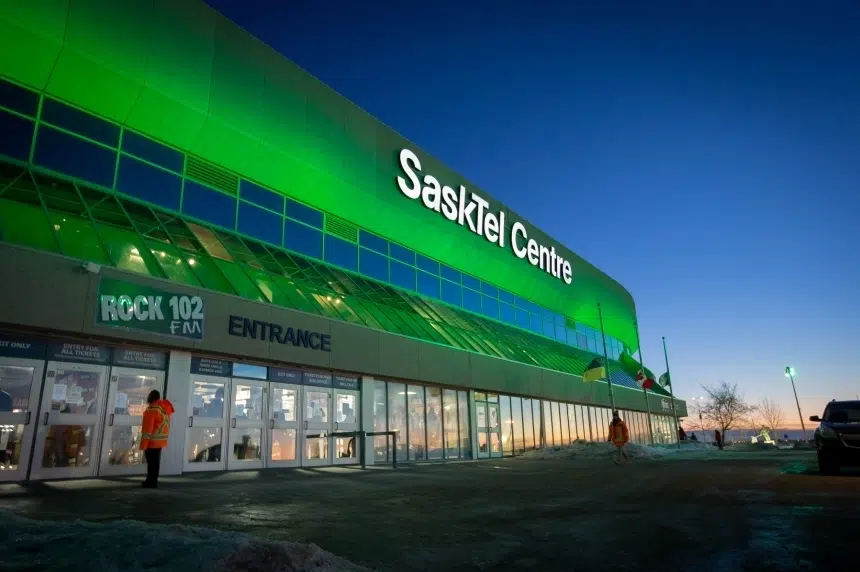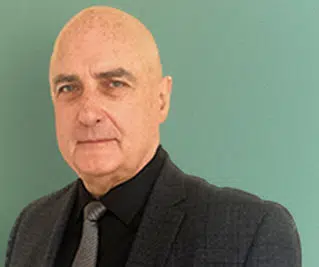While Saskatoon is still on the fence about building new or renovating the existing SaskTel Centre, one expert in arena design says time is of the essence.
Mark Rosentraub is a professor of sport management at the University of Michigan and author of Reversing Urban Decline. He’s also helped design dozens of stadiums in the United States.
He was in Saskatoon Thursday speaking to business leaders about a downtown arena. Before the presentation, he went to see SaskTel Centre and later spoke about the experience on Gormley.
“Great sightlines. It was designed well 30-odd years ago,” he said, before pointing out the drastic changes to entertainment since then.
“(But) as people can basically replicate sound in their homes better, you have to essentially produce a show that encourages them to get off the couch and into the arena. The arena becomes the show as much as the performer.”
Rosentraub noted that in its current state – with outdated infrastructure and a lower ceiling height – SaskTel Centre isn’t able to compete for shows against places like Edmonton.
“So the question’s going to be, better start the conversation. Begin getting the plan together, because inside of three to five (years) – your facility is going to be obsolete.”
According to a city report in March, the cost of building a new arena and convention centre is pegged at between $330 million and $375 million – not counting land, infrastructure and relocation costs.
By contrast, the cost of renovating both SaskTel Centre and TCU Place, which was included in the study, was pegged at just below a combined $120 million.
Rosentraub said while he’s not in Saskatoon with a financial plan, the key is knowing that if it doesn’t work for the public sector financially — it won’t work for the private.
“It can’t work for one and not the other,” he said.
‘Building a new neighbourhood’
For those concerned about the viability of a downtown arena, Rosentraub pointed out a build would be more than just bricks and mortar.
“It’s trying to make sure people understand it’s not about the venue — whether it’s an arena, a ballpark or a stadium — we’re building a new neighbourhood, a new downtown area,” he said.
Rosentraub said when people started talking urban design about 40 years ago, most followed a model with a central business district, and everything going out in “rings” from there to residential areas.
“That’s basically the way cities existed for a very long period of time. Why? Because it reduced transportation costs, and reduced communication costs,” he said.
“Where urban areas now no longer have a dominant central city, they ‘spill out’ … so economic activity now is dispersed throughout a metropolitan area.”
Therefore, when it comes to re-centralizing economic activity, Rosentraub said there’s nothing better than live sports and entertainment.
“Professional sports and professional entertainment brings people into the city and can’t be duplicated in the suburbs.”
Addressing Saskatoon specifically, Rosentraub pointed out the city has a really large footprint.
“In other words, wherever the economic activity happens, it happens within Saskatoon,” he explained.
“So what happens in cities like Saskatoon, is you’re in a competition for human capital.”
He said right now, the Bridge City offers plenty of housing for people who are at the stage of forming families — while largely ignoring the needs of two large, changing, demographic groups.
He noted that since the millennial generation mostly start family families close to or in their thirties, they’re looking for housing in their 20s that offers the “urban experience.”
“They don’t want the single family detached home. They’re heading into career building; they’re into having a good time and going out.”
He said if a city doesn’t offer that, most people simply leave. The second demographic shift, Rosentraub noted, was his own.
“I am the first generation … that will live longer without their children, than with their children,” he said, adding that changes what kind of home people live in for the last few decades of life.
“You don’t need to deal with taking care of the lawn, you don’t need to worry about snow accumulation. You want smaller space, high quality, but also that kind of urban experience.”
Rosentraub pointed out this doesn’t mean restructuring the city, it just means making sure there’s enough housing appealing to millennials, empty nesters and families.
He added this is what corporations and investors are looking at when it comes to the financial viability of projects, or relocating to a city.
As for those concerned about parking around a downtown arena, Rosentraub was quick to stress that transportation — especially the shift to autonomous personal vehicles — will drastically change those needs over the next decade.







